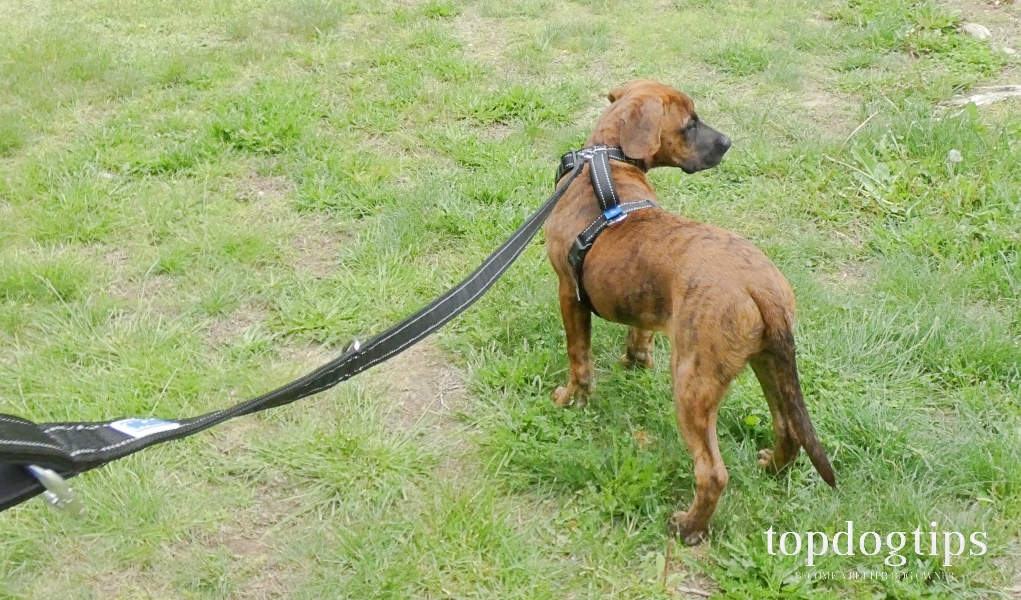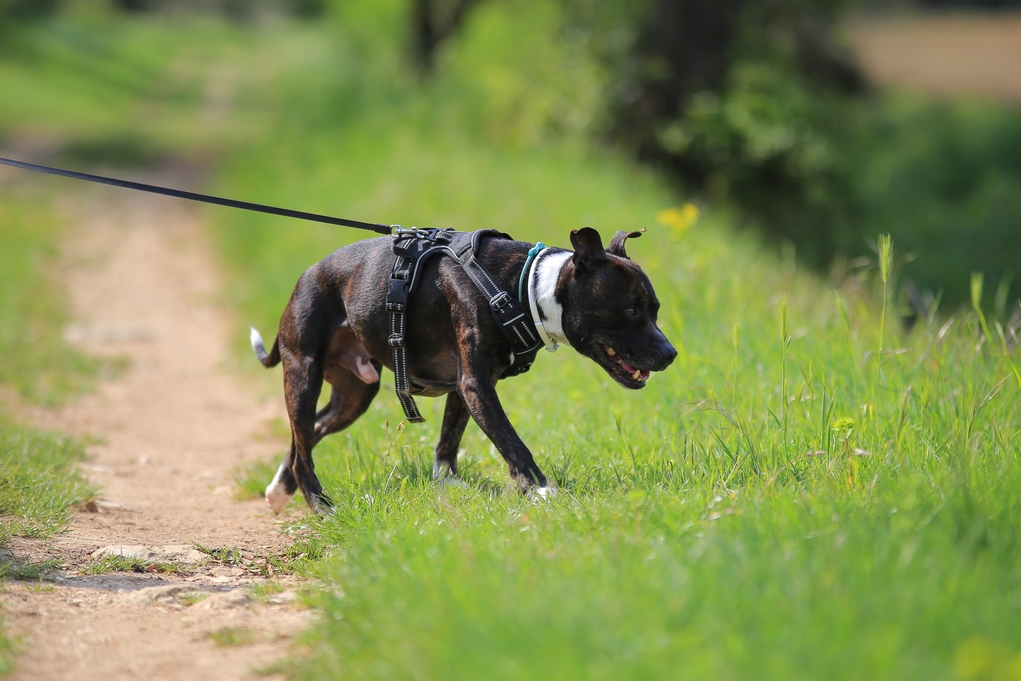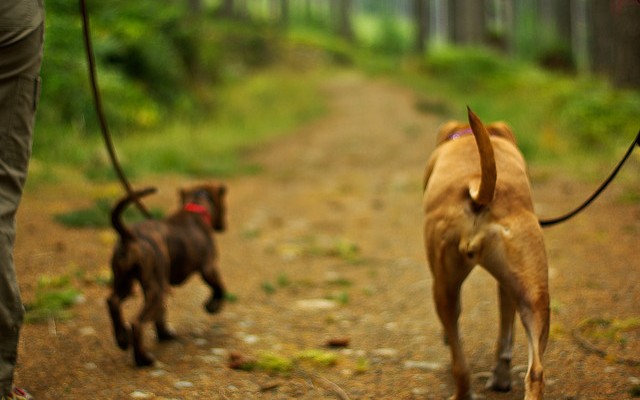Whether you have a big yard in a rural town or you live in a third floor apartment in the city, you'll need to know how to teach a dog to walk on a lead. Every pet owner will need to have their pooch on a leash at some point, and it's best to train your dog properly beforehand.
Some dogs will take naturally to leash training. They won't pull often or try to wiggle out of their harness/collar. Other dogs may be quite a handful once confined to a short lead. As with any type of training, learning how to teach a dog to walk on a lead will take time and patience.
The process of training a dog to walk on a leash is actually the easy part. It's putting these skills to use that will be tricky for most owners. You'll need to stay calm and be patient, follow the steps consistently, and if you do, you'll be walking with your dog on a leash without any problems in no time.
How To Teach A Dog To Walk On A Lead
 1. Choose the right gear & make sure it fits
1. Choose the right gear & make sure it fits
I recommend using a no-pull harness instead of a collar when training a dog to walk on a leash safely. You can certainly use a leash and collar, especially if your dog isn't a puller. However, I would still recommend a harness for all dogs that are new to leash walking because they are a much safer option and more comfortable for your dog.
A no-pull dog harness spreads the pressure out evenly across your dog's chest, causing your pet no harm and eliminating the risk of injury to his throat.
Whether you choose a collar or a harness, be sure that the product is properly fit on your pooch. Collars should fit tightly around your dog's neck, but not too tightly. You should be able to comfortably slip two fingers between the collar and your pup's neck.
Harnesses are a bit trickier to fit, but the benefits outweigh this drawback. They have multiple adjustment points, but the rule of thumb is still the same – you should be able to slip two fingers between the strap if the harness and your dog's body. If you need more help on properly fitting your dog with a harness, watch my guide here.
Once you achieve the proper fit, allow your dog plenty of time to walk around wearing it without the lead attached. Let him get familiar with the feeling of the harness or collar, so he will realize that it is comfortable and unobtrusive. Your pup should be able to comfortably walk around with no restrictions to his range of motion.
After your dog is used to the harness/collar, then allow him some time to get used to the leash, too. Place the leash on the floor where Fido can sniff it. Then, attach it to the harness for 1-2 minutes at a time so he realizes that the leash isn't a threat. Do this several times before beginning to learn how to teach a dog to walk on a lead.
ALSO: Why NOT To Walk A Dog Without A Leash
 2. Start small and work through the process gradually
2. Start small and work through the process gradually
As with all dog training, learning how to train a dog to walk on a lead needs to be done gradually. As I demonstrate in my video guide above, you need to start down on your dog's level, about 2 feet in front of him.
Use a motivating training treat to temp your dog, and call him over to you. He may be a bit skittish at first, but he'll come to get the treat soon enough. When your pet does make his way to you, lots of affection and praise should be given to show him that he's on the right track. Dogs love to please their owners!
Once your pet gets comfortable walking 2-3 feet toward you, you can slowly increase the distance between the two of you until your entire leash length away. As you back away from the dog, you'll also want to decrease the use of the treat, only treating him every other or every third time that he walks over to you.
Slowly increase your height, too. Start on the dog's level to make him feel more comfortable at first, but as he begins to understand the concept of walking on the leash, stand up a little taller each time you back further away. The goal is to get him used to walking beside you while you are standing up.
When your dog walks comfortably on the leash at a 5-6 foot range, you can begin moving around your yard. Again, as with previous methods, you'll need to build your pup's stamina gradually.
3. Do NOT pull on the leash
Some dog owners think that if they just coax their pup along and pull on the leash a little bit, the dog will naturally follow and begin to walk along as if understanding what you're trying to accomplish. This is false.
While this “technique” may work with a select number of dogs, it's not the best way to learn how to teach a dog to walk on a lead, and it could also result in your pooch getting injured. Simply put, pulling on the leash will most likely have the opposite effect that you desire. It may make your training more difficult in the future.
Likewise, pulling on the lead may cause your dog to become nervous and view the leash as a threat. It may also backfire and cause the dog to become scared of the leash, which could lead to him trying to back out of his harness and escape.
4. Stay calm, be patient, be consistent
All types of dog training take patience and consistency. If you get frustrated, your dog is going to pick up on it, and he'll become anxious and frustrated too. If you feel yourself getting angry or frustrated at your pet, take a break and come back to the training later.
Learning how to train a dog to walk on a lead isn't something that will happen in one session. With most dogs, it won't even happen in a few sessions. Depending on your pet's personality, this type of training will take many sessions over the course of many days.
When teaching a dog to walk on a leash, you need to keep your dog's comfort and happiness in mind. As with any training method, work at your pet's pace. If your pup is having fun and enjoying the training, continue; if he's starting to get discouraged, take a break.
READ NEXT: Science-Based Dog Training – How Research Influenced Our Approach to Training Dogs













